Implicit Cosmology
An Overview
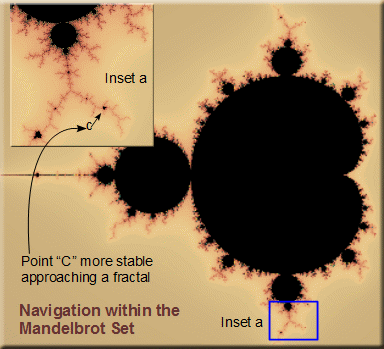
Content License for this paper: Creative Commons Attribution-NonCommercial-ShareAlike 4.0 International
The Anatomy of Consciousness Diagram shown below is intended as a “roadmap” for people studying the Implicit Cosmology. This paper originated as a Facebook post intended to attract meaningful comments. Much of the brief writing style for Facebook has been retained. Many of the papers on the Etheric Studies website provide more comprehensive background.
Consciousness, reality and life fields are complex subjects that are not easily described in a single paper. Having a roadmap to guide readers through those complexities has always been a known need, but an elusive challenge for me. The Anatomy of Consciousness Diagram should prove useful as such a guide.
Note that I did not wake one morning and say, I will design a cosmology, and this will be the roadmap. Instead, I stumbled about with many others, trying to understand the actual nature of the phenomena we were experiencing. The result has been an evolution of understanding that has taken many years. (Note that my first effort to codify what I was learning was the Handbook of Metaphysics published in 1994. It is much out of date, theory wise.)
The material on ethericstudies.org should be considered the substance of this Anatomy. When reading the papers, be mindful of their publication date. My evolution in understanding is reflected in the papers so that the earlier papers are relatively primitive.
Introduction
I have been trying to figure out how to illustrate the Implicit Cosmology as it applies to the three Seeker’s questions: Our nature, the nature of reality and our relationship with reality. The Anatomy of Consciousness Diagram is my current attempt.
The model came about in the order of Layers 1, 2, 4 and then 3. It began in 2000 as my wife, Lisa and I worked with ATransC members and other groups in Europe to understand the etheric-physical interface for the formation of Electronic Voice Phenomena (EVP). Consider the paper: What ITC Tells us About Consciousness.
That study resulted in a sense that EVP have characteristics that are currently not explained with physical principles. For instance:
Mental and physical nonlocality – Nonlocality, meaning that the source and effect are not confined to physical dimensions. Mental nonlocality because EVP have been shown to be influenced, even originated, by interested observers living in a distant city. Physical nonlocality because EVP have been collected in radio, sound and magnetism shielded chambers, meaning that the recording device cannot be shielded from mental influence. There is also no apparent time delay between the apparent influence and the resulting EVP.
Concept-to-physical transforms – There is evidence that the influence that results in an EVP begins with the mental influence on the concept representing the EVP. That seems to support the Hermetics Principle of Mentalism The all is mind; The universe is mental.
Level 1 is a necessary study of concepts fundamental to the study of consciousness. That is, First Cause, implicate principles and etheric fields.
Level 2 developed as I tried to understand why different points of view resulted in EVP with rather different tones. The central concept in that is worldview and the functions that consult worldview to produce psychokinetic expression. I refer to that group of functions as the Attention Complex diagramed below.
My next challenge was finding a way to model why only about 25% of people hear the EVP as expected. This question also touched on the question of why some practitioners are convinced they have recorded an EVP when the consensus of a witness panel is that they only recorded noise. Of course, this can also apply to conspiracy theorists.
I modeled Level 4 as Temperament Mediated Perception model diagramed below. It is intended to explain how our choices are colored by our discernment. This relates to the motto on my website: Believe what you wish but understand the implications of what you believe.
In recent years, I have focused on how the Implicit Cosmology applies to a person seeking spiritual maturity whom I refer to as a Seeker. I previously only partially understood the importance of what I refer to as the Attention Channel between conscious self (Level 3) and mostly unconscious mind (Level 2).
The missing element is what has become the Intention Review function of Conscious Self (Level 3). And so, Intention became the feedback to the expression forming functions of Level 2 to modify worldview as conscious self seeks to better understand actual reality. See the Creative Process Diagram below.
The Facebook post did receive several “Likes,” Facebook Friend Steve commented that the meaning of some of the terms was not clear. In response, I provide a brief explanation for each level as Comments on the same thread, hopefully, making the meaning clear. I ended up posting the five “Comments” below.
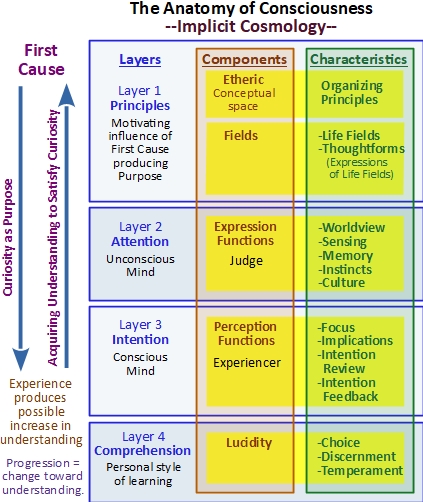
First Comment
Nested Hierarchy and Life Fields.
A hierarchy is an ordered relationship amongst elements of a system. In the Implicit Cosmology, the First Cause is oriented at the “top” of the reality hierarchy. In The Cosmology of Imaginary Space paper, I compared reality to the Mandelbrot Set. The “Apple Man” fractal represents the top element of a hierarchy of Apple Man fractals that is defined by plotting a simple equation.
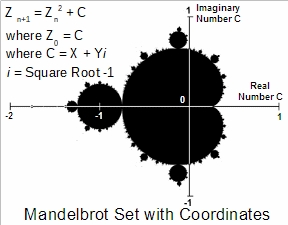
While I refer to reality as a dimensionless singularity that is conceptually infinitely large, the complex space of the Mandelbrot set is almost dimensionless with -2 to +1 on the real number plane and -1 to +1 on the imaginary number plane and infinitely small as one approaches zero. Navigation is accomplished by changing initial assumption (C) for new plots.
Reality is nested in the sense that hierarchies tend to have a many-to-one relationship. A good example of this is a biological organism. Our human avatar, for instance, is organized as a many sibling skin cells associated with a parent embryonic skin cell. The same for bone, organs, limbs, hair.
The expression of curiosity is expected to have produced a mechanism to have experiences and to derive meaning from them. I will explain the elements of a life field in a different post. The idea is that that mechanism naturally results from the difference in potential of expressed curiosity and expected understanding.
As it is modeled, life fields needed to have the characteristics of purpose, memory and awareness of previously acquired understanding. It also needed a way to compare current experience with previous experience. Life fields have a mechanism to sense the environment, express current understanding to sibling life fields and evaluate the agreement of that expression with the intended understanding.
Using our life field as an example, we receive (sense) environmental information. We have a worldview function that represents memory, cultural experience (prior understanding), and purpose. We also have a way to ignore environmental information that is irrelevant. And a way of testing relevant information for meaning. Our expression is the result of that test. It is a streaming output.
All of that part of our life field consists of unconscious functions. Our conscious function manages our intentionality. It tests our unconscious expression (awareness) to determine if that is what we intend. Our conscious self produces an intention feedback signal to our unconscious functions as a way to guide our expression more towards our purpose to gain understanding.
A life field is able to express an aspect of itself as a way to further experience its environment. We do that when we imagine ourselves in a situation, for instance driving that sports car that we just saw. In effect, we imagine the car, the road, and a “little me” of ourselves driving. In order to gain a sense of what the experience would be like, we give “little me” specific purpose that is a subset of ours. We also give it a degree of freedom of choice so as to receive back a more candid understanding.
We can return to the memory of that imagined experience at any time and our “little me” remains part of our memory. In effect, we have created a life field that is a child of our life field. As we imagine other experiences, we produce other child life fields which are siblings and cooperate to help us fulfill our purpose of gaining targeted understanding. We acquire that purpose from our parent life field.
So, you can see, life fields are arranged in a nested hierarchy architecture with First Cause at the top. Our sibling life fields are our collective. It appears that guiding spirits we sense are members of our collective. It serves their purpose to help us serve ours. You may be in my collective but are probably in a different one. Thus, we see differences in temperament and spiritual maturity in society.
As the model goes, the physical is a venue for experience that is shared by many parent life fields.
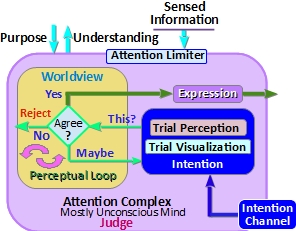
Second Comment
Level 2 – Attention
The Attention Complex in the Implicit Cosmology represents our mostly unconscious mind. As modeled, it has the primary purpose of sensing environmental information signals and expressing what we think of them based on our worldview. Our conscious self becomes aware of the resulting output expression signal. Refer to Part 2 Life Field Anatomy in the Elements of a Useful Theory of Consciousness essay.
Our biological body (any biological organism) is modeled here as a top or parent life field consisting of a nested hierarchy of child life fields (skin, bone, meat, arm). Following Sheldrake’s theory of Morphic Resonance, our body is organized by a morphogenic mind I refer to as “Mind 2.” That is Sheldrake’s “Nature’s Habit.”
I use the word “attention” to indicate our state of elementary or undifferentiated consciousness (aka sentience). The Attention Complex represents the unconscious aspect of our mind in which our consciousness is characterized to express who we are.
“Environmental information” can be the expression of other personalities (life fields). From the perspective of a person (Mind 1 + Mind 2), the environmental signal could be from Mind 2 representing the biological body’s five senses. See the Two-Mind Solution to the Survival Hypothesis Paper.
“Expression” is our thought. It is streaming in the sense that our mind is continuously deciding what it thinks of ever-present sensed information. Our conscious self’s aware “perception” of the world is based on our unconscious expression. That is, we do not directly sense environmental signals. We only sense what we think of those signals.
Worldview is like a database that is populated with purpose and previously acquired understanding inherited from our primary self’s (Mind 1) collective of sibling life fields. When we are modeling a person (Mind 1 + Mind 2), our worldview is also populated with our human’s instincts, memory and cultural influences.
Mind 1 and Mind 2 are entangled at birth of Mind 2. Entanglement is primarily in the Attention Complex. First human instincts and then cultural training and then memory dominate formation of our expression. The influence of our primary self (Mind 1) appears to be very small but may increase if the conscious self realizes the need to examine the implications of our perception. See Level 3.
Implications
Our worldview acts as a judge to determine what we think is real. Since our worldview is dominated by instincts, the majority of people make decisions based on choices that are necessary for them to ensure the continuation, even dominance of their gene pool. That is, cultural influences guides “go along to get along” choices.
Our worldview acts as a navigator to determine what we are able to experience. In effect, we cannot experience that which we cannot conceive of and that is determined by our worldview. For instance, if we think an old lady eats children behind the pizza parlor, it would be difficult for us to see her in person as a sweet grandma.
The tunnel reported in some Near-Death Experiences (NDE) may be the reaction of our conscious self being separated from the influence of culture and instincts for the first time.
Our unconscious expression and then our conscious perception, is based on a likely story concocted by our unconscious mind in response to sensed information and shaped by worldview. For a very lucid person, the story might reasonably agree with sensed information; however, most people are likely to perceive the information in the way they have learned. For instance, information acquired during an Out of Body Experience (OBE) may be accurate, but how the experiencer later reports it may be colored by expectations induced by religious or cultural beliefs. That is why we have learned to suspect mediumistically and psychically reported information and personal accounts of altered state experiences. This is true to a lesser extent with ITC.
The bottom line is that we are reluctant to consider first person accounts evidential. This should also be said of ITC.

Third Comment
Level 3 – Intention
While the mostly unconscious mind represented in Level 2 represents the mental functions that produce our mind’s thoughts or outward expression, our conscious mind represents the mental functions that produce our sense of self as in “I think I am this.” That sense of self is still moderated by worldview, and because of the dominance of our human’s instincts, we are naturally guided to assume that self is in our human’s head.
Our conscious mind does not directly sense reality, our avatar or physical world. It becomes aware of the world as a streaming perception signal by way of the streaming expression signal coming from our unconscious mind. In effect, our conscious mind tests the perception signal asking, “do I agree,” “is this what I intend” or “do I want this.” The result of the test is a streaming feedback signal representing conscious self’s intention to the input of the unconscious Attention Complex (Level 2). The signal helps entrain the expression forming functions to better conform with our conscious intention. Possible outputs of that test include: (See The Color of Fear Paper)
Agree – Feedback is neutral
Strongly agree – Feedback reinforces the expression result which reinforces conscious self’s perception of the initial environmental signal input.
Want a different expression – Want signals appear to be self’s way of changing worldview. See Level 4. This would be consistent with Sheldrake’s “Creative solutions to environmental challenges that change Nature’s Habit.”
The influence of the feedback signal is typically modest; however, a strongly agree signal can produce immediate results. For instance, the feedback might indicate strong agreement with a fearful expression, resulting in a fixation we would characterize as obsessive fear. The same goes for agreement with expressions colored with religious or conspiratorial beliefs. Remember that in the “spirit having a human experience Hypothesis,” spirit (Mind 1) probably does not fear or believe.
Most people do not realize that their worldview is forming their thoughts, and instead assume their conscious self is producing their thoughts. As is discussed for Level 4, some people begin to realize that what they think is true may not represent actual reality.
In some cases, this change begins when people realize they are more than their physical body. I refer to the change as a person stepping onto the Seeker’s Way.
I should refer to our conscious self as “mostly conscious.” New Age wisdom teaches various levels of consciousness such as “mind awake, body asleep” (Monroe), the Alpha, Beta, Delta consciousness levels (biofeedback) and the “centering” of clairvoyance.
While the ability to enter and maintain a deep level of trance generally must be developed, it is arguable that everyone briefly and spontaneously enters into deep trance in circumstances like remembering a word. The word is not in our conscious self. It is in our worldview. In such situations, the intention feedback signal would be a strong “want.” Signal.
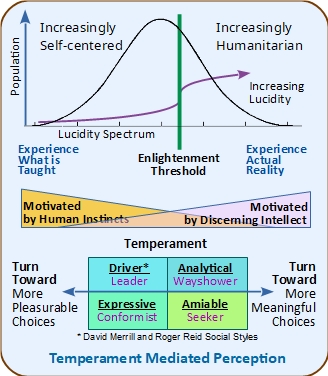
Fourth Comment
Level 4 – Comprehension
level 1 of the Anatomy of Consciousness Diagram is concerned with building blocks of reality – life field, thoughtforms and organizing principles.
Level 2 is concerned with the organization of a life field’s mind and the unconscious formation of thought.
Level 3 is concerned with a life field’s conscious perception of thought and development of choice.
Level 4 is concerned with the way a life field understands perception and makes decisions.
The Implicit Cosmology began with our wondering how EVP are formed. Level 1 and 2 of the diagram was developed first but did not answer why different practitioners working in essentially the same situation recorded EVP with often radically different messages. Then came the question of why some people correctly hear examples while others do not. Then, why do people hear voices where there clearly are none? For that matter, why do people believe in conspiracies?
My study of how people formed comprehension produced the “Temperament Mediated Perception” (TMP) Model described in Part 3 of the Elements of a Useful Theory of Consciousness Essay. As it is used here, “comprehending” is forming a thoughtform about sensed information and integrating it into the person’s worldview.
A person that comprehends something is able to infer other characteristics that are not explicitly included in the source. For instance, during initiations, students in “secret wisdom schools” are sometimes asked, not to recite a lesson, but to infer meaning from the lessons. The idea is for the student to demonstrate understanding (comprehension) of the lesson’s intent.
In terms of a hierarchical model or cosmology Layer 4 is the most complex. “Lucidity” is used here to indicate the evolution of perception toward understanding. Here, lucidity has the quality of agreement with the actual nature of reality. In other words, is what the experiencer thinks is true, actually true? My assumption here is that we approach understanding through many life experiences and that understanding is never complete.
As it turns out, just as people are born left or right-handed, so are people born with different learning styles often referred to as temperaments. Yes, instincts and cultural training dominate choices, but people’s learning style bias those choices leading to unique ways of interacting with the world. I use the “Driver, Analytical, Amiable and Expressive” model described by David Merrill and Roger Reid. Again, refer to the “Elements of a Useful Theory of Consciousness” Essay.
Briefly, a Driver tends to seek to dominate. An Expressive tends to be a conformist or follower. An Amiable tends to be a seeker. An Analytical tends to be a wayshower or teacher. The model is usually used in combination. For instance, I consider myself a Seeker-Teacher.
The four temperaments are arranged in the TMP Model diagram to show Dominant (Driver) and Conformist (Expressive) personalities on the left and toward the “More motivated by human instincts” side. Seeker and teacher personalities are on the “More motivated by discerning intellect” side. The idea is to show that there is a continuum between the two extremes described as the “Lucidity Spectrum.”
Lucidity means more clearly sensing the actual nature of reality. Lucidity is a quality of consciousness that represents a continuum from perception based entirely on cultural and instinctual assumptions to perception based on longtime, habitual examination of the implications of perception. People become more Lucid as they develop and apply discernment.
The motto on my personal web site reads: “Believe what you wish but understand the implications of what you believe.” Discernment is the habitual examination of the implications of thought and making choices based on what is perceived to be most consistent with reality. That is, examine implications and base your choice on what makes most sense and not just what you are taught.
The majority of people comprehend their world from the perspective of instinct and cultural dogma. This is mostly an unconscious kind of decision making. For most people, accepting cultural stories such as “Liberals are evil” or “people who believe in ghosts are delusional,” are accepted as truth if they are told by dominant personalities.
I refer to the change in the way people make choices from based on instinct to based on discernment as the “Enlightenment Threshold” on the Lucidity Spectrum. If the change is a habitual one, then they become Seekers.
Level 4 helps us understand the way people process information. Our purpose is to have experiences and to learn from them. Since we are entangled with a human, it seems reasonable to think that it is our human’s experiences we are after. It would defeat the purpose of this lifetime if we did not honor our human’s way of life. Imposing our views would seem to break the system.
Thus, I think it is important that we live and learn from our human’s life. It is important that most people think they are humans. But it is also important that we seek lucidity brought by discernment. Perhaps our purpose is to live as a human while realizing that we are not our human.
![]()
